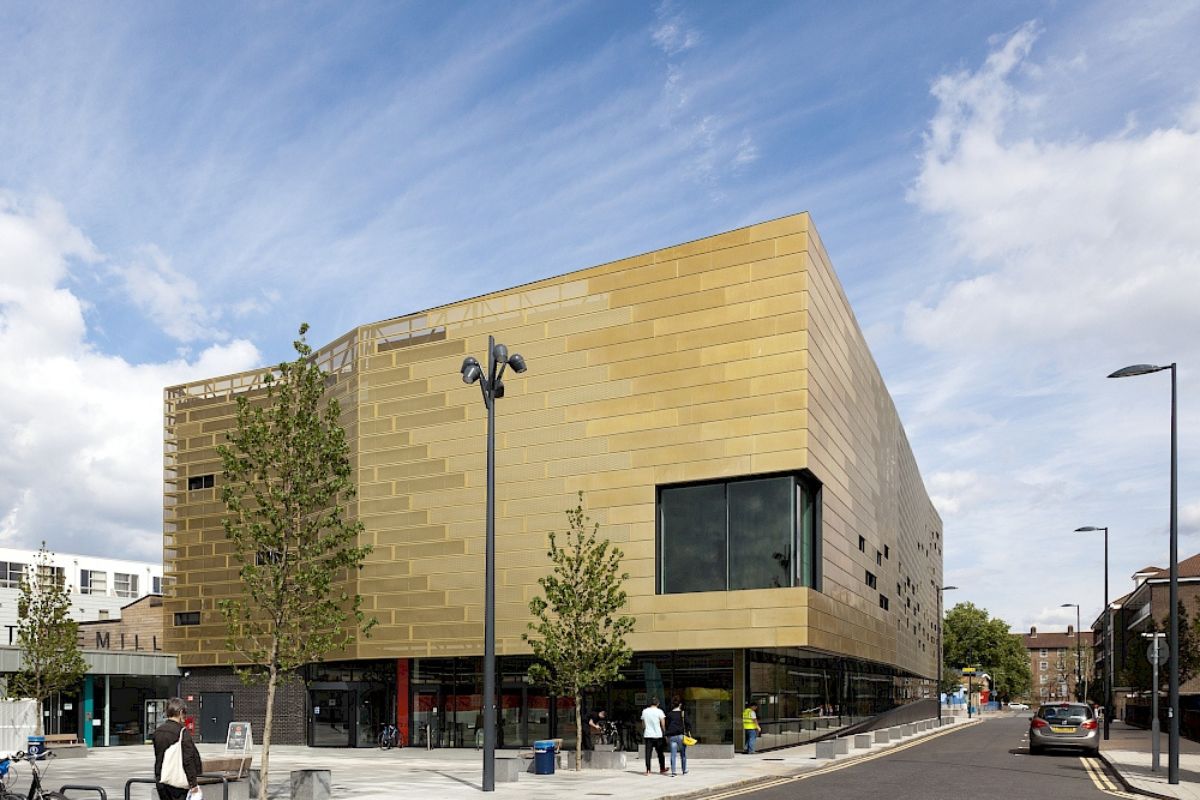Let's use RAAC as a chance to use co-location to reimagine local schools as a community's beating heart
The Building Schools for the Future (BSF) programme, launched in 2005, was due to finish this year. However, the programme was stopped in 2010. Is it fair to assume had BSF been completed, then the RAAC challenge we face today – largely a question of ongoing maintenance and repair - would never have arisen?
Not quite, but we have been presented with a genuine opportunity to reconsider how our school estates can better serve communities through co-location.
In many ways, RAAC has highlighted just how outdated our relationship is with our local schools. Why for example, are schools shut for almost two months during the summer? Why do they close so early during term time? And why, given their footprint size (pretty big, mostly), aren’t their air-rights - most schools are low-rise - given over to housing?
Here at Pollard Thomas Edwards (PTE), we’ve proven, at the Netley Campus in Euston, for example, that co-location works as a cross-subsidy model (and don’t listen to critics who cry ‘Overlook!’. In England, most urban schools rub shoulders with housing. It’s practically a template.)
In short, if we look at school estates – with their sports and playgrounds, assembly halls, science labs, art workshops, canteens, kitchens, and sometimes special functions, like theatres, for example – as under-utilised mixed-use wonders, then we find ourselves facing a very different, and far more agreeable, challenge.
What, we can ask ourselves, is the best way to place schools at the heart of communities and neighbourhoods, so that everyone – children, parents, grandparents, and anyone who lives nearby – can benefit from its resources? To play evening sport, partake in life-long learning, or go see the latest take on Waiting for Godot. Or maybe even enjoy a meal in the school canteen-cum-pop-up restaurant.
In terms of co-location, our Deptford Lounge project from 2012, goes quite a bit further than Netley. It combines a primary academy, district library, community centre and artists’ studios with affordable homes (It also made possible the adjacent Market Yard – a restored Victorian carriage ramp incorporating 14 commercial spaces).
The secret of that project’s success, like most successful projects is people – and the trust they place in each other. As the building’s facility manager told us during a recent revisit, that culture of trust extends to relationships with the library service (“we check in with each other all the time, support each other, help each other with activities”); the public (“we run ‘pay what you think’ theatre performances so anyone can afford them”); and artists too, who are given free use of facilities in lieu of payment if they run community workshops.
In London, co-location – as promoted by The Mayor’s 2021 London Plan (Policy E7) – means knitting industrial and residential uses to form mixed-use developments on brownfield sites. It’s a policy we’re fully behind and which delivered, according to a report by Turley, more than 500 homes over the past year.
Co-locating housing with schools is a model we continue to work with and develop at PTE. At Bow Garden Square in Tower Hamlets (2020), for example, the plan is centred around a courtyard providing a new two form entry primary school - with housing above. It also incorporates a mosque and a terrace of affordable homes.
Funding models grounded in the community and tied to housing and other community essentials, we think, offer a durable, viable future for our towns and cities, that past models – PFI for example – have struggled to satisfy.
As we build back better – remember that, from 2021? - and re-imagine how town and city centres can be revived post Brexit, post-pandemic and now post-RAAC, making schools the new high streets and fit for the future, seems glaringly obvious.
Furthermore, the co-location of schools and housing has significant benefits for reducing neighbourhood-scale carbon emissions. This part of net zero is often not considered, as we tend to assess the buildings carbon impact individually, with a high baseline providing a comparison. The impact of sharing school facilities has significant lifecycle carbon reductions, embodied and in use, compared to the status quo of two different building projects remote from each other. As well as reducing embodied carbon, co-location can drive net zero in use with less transport emissions, and potential for energy generation and sharing across different times and functions.
Rory Olcayto is writer and critic at Pollard Thomas Edwards



